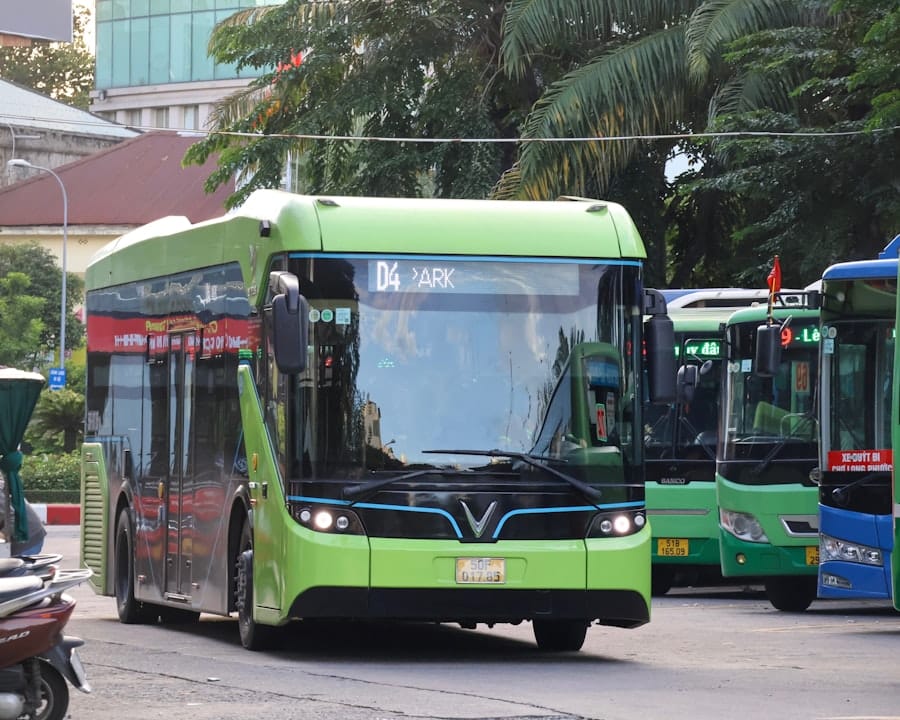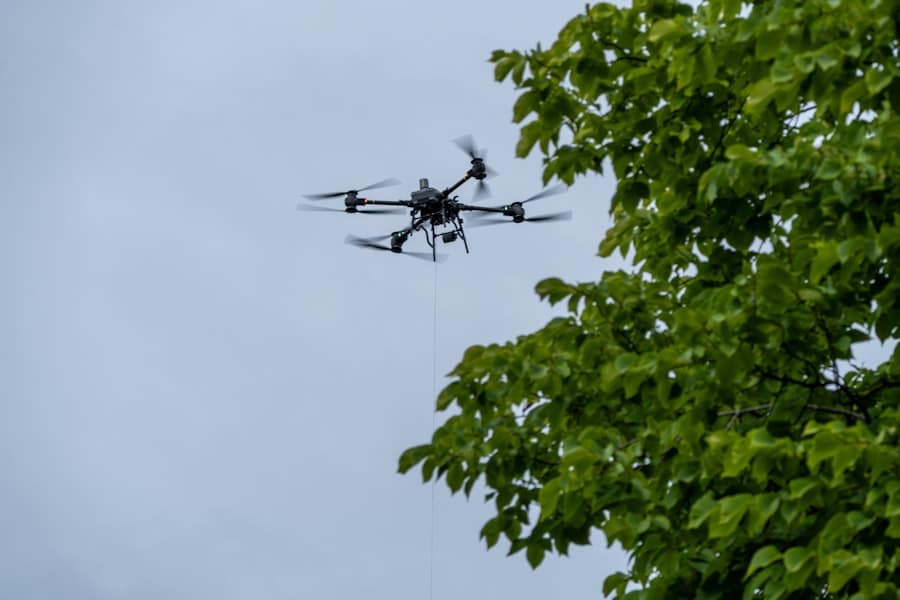The advent of renewable microgrids represents a transformative shift in how communities can harness energy resources. Unlike traditional energy systems that rely heavily on centralized power plants and extensive transmission networks, renewable microgrids are localized energy systems that can operate independently or in conjunction with the larger grid. These systems typically integrate various renewable energy sources, such as solar panels, wind turbines, and biomass, along with energy storage solutions like batteries.
The decentralized nature of microgrids not only enhances energy resilience but also promotes sustainability by reducing reliance on fossil fuels. As climate change continues to pose significant threats to global ecosystems and human societies, the urgency for cleaner energy solutions has never been more pronounced. Renewable microgrids offer a viable pathway for communities to reduce their carbon footprints while ensuring energy security.
By leveraging local resources and technologies, these microgrids can provide reliable power even in the face of natural disasters or grid failures.
Key Takeaways
- Renewable microgrids offer localized, sustainable energy solutions for communities.
- Community A’s transition highlights practical steps and real-world benefits of microgrid adoption.
- Benefits include increased energy resilience, cost savings, and reduced environmental impact.
- Implementation challenges can be addressed through community engagement and innovative technologies.
- Future outlook is promising, with microgrids playing a key role in community empowerment and clean energy access.
Case Study: Community A’s Transition to Renewable Microgrid
Community A, a small town located in a region prone to severe weather events, embarked on a journey to transition from a conventional energy system to a renewable microgrid. Faced with frequent power outages and rising electricity costs, the community recognized the need for a more resilient and sustainable energy solution. The transition began with a comprehensive feasibility study that assessed local renewable resources, energy consumption patterns, and potential funding sources.
The study revealed that Community A had abundant solar potential, with an average of 300 sunny days per year, making it an ideal candidate for solar energy generation. With the feasibility study in hand, Community A engaged stakeholders, including residents, local businesses, and government officials, to discuss the benefits and logistics of the microgrid project. Through a series of community meetings and workshops, residents expressed their support for the initiative, emphasizing the importance of energy independence and environmental stewardship.
The project secured funding through a combination of state grants, federal incentives, and community fundraising efforts. By collaborating with local renewable energy companies, Community A successfully installed a solar array coupled with battery storage systems, allowing them to generate and store their own electricity.
Benefits of Renewable Microgrids for Communities

The benefits of renewable microgrids extend far beyond mere energy generation; they encompass economic, environmental, and social dimensions that collectively enhance community well-being. One of the most significant advantages is the increased resilience against power outages. In areas prone to extreme weather events or natural disasters, microgrids can operate autonomously when the main grid fails, ensuring that critical services such as hospitals, emergency response centers, and communication networks remain operational.
This resilience is particularly vital for vulnerable populations who may be disproportionately affected by power disruptions. Moreover, renewable microgrids contribute to local economic development by creating jobs in installation, maintenance, and operation of renewable energy systems. As communities invest in their own energy infrastructure, they stimulate local economies by keeping energy dollars within the community rather than sending them to distant utility companies.
Additionally, the reduction in energy costs associated with renewable sources can lead to lower utility bills for residents and businesses alike. This financial relief can be particularly impactful for low-income households, allowing them to allocate resources toward other essential needs.
Challenges and Solutions in Implementing Renewable Microgrids
Despite the numerous advantages of renewable microgrids, several challenges can impede their successful implementation. One significant hurdle is the initial capital investment required for infrastructure development. While costs for renewable technologies have decreased over the years, funding remains a critical barrier for many communities.
To address this issue, innovative financing models such as public-private partnerships and community crowdfunding initiatives have emerged as viable solutions. These models allow communities to leverage diverse funding sources while sharing the financial risks associated with project development. Another challenge lies in regulatory frameworks that may not be conducive to microgrid deployment.
In many regions, outdated regulations can hinder the ability of communities to generate and sell their own electricity. To overcome these regulatory barriers, advocacy efforts are essential to promote policy changes that support decentralized energy systems. Engaging with policymakers and regulatory agencies can help create a more favorable environment for microgrid development.
Additionally, pilot projects can serve as valuable case studies that demonstrate the feasibility and benefits of renewable microgrids, thereby influencing future policy decisions.
Economic and Environmental Impact of Renewable Microgrids
The economic impact of renewable microgrids is profound, as they not only create jobs but also stimulate local economies through reduced energy costs and increased energy independence. By generating their own electricity from renewable sources, communities can shield themselves from volatile fossil fuel prices and reduce their overall energy expenditures. This financial stability allows residents and businesses to invest in other areas of the local economy, fostering growth and innovation.
From an environmental perspective, renewable microgrids play a crucial role in mitigating climate change by reducing greenhouse gas emissions associated with traditional fossil fuel-based power generation. By transitioning to clean energy sources such as solar and wind, communities can significantly lower their carbon footprints while promoting sustainable practices. Furthermore, the localized nature of microgrids minimizes transmission losses that occur in centralized systems, enhancing overall energy efficiency.
As more communities adopt renewable microgrids, the cumulative effect on regional and national emissions can contribute to global climate goals.
Community Empowerment and Engagement through Renewable Microgrids

One of the most compelling aspects of renewable microgrids is their ability to empower communities by fostering engagement and collaboration among residents. The process of designing and implementing a microgrid often involves extensive community participation, allowing residents to voice their needs and preferences regarding energy generation and consumption. This participatory approach not only builds trust among stakeholders but also cultivates a sense of ownership over local energy resources.
Moreover, renewable microgrids can serve as educational platforms that raise awareness about sustainability and energy conservation. Workshops and training sessions can be organized to inform residents about renewable technologies and best practices for energy efficiency. By equipping community members with knowledge and skills related to clean energy, microgrids can inspire individuals to adopt more sustainable lifestyles beyond just their immediate energy consumption.
This empowerment extends to local decision-making processes as well; communities that successfully implement microgrids often develop stronger networks for collaboration on other sustainability initiatives.
Lessons Learned and Best Practices for Implementing Renewable Microgrids
The journey toward establishing renewable microgrids is often fraught with challenges; however, several lessons learned from successful implementations can guide future projects. One key takeaway is the importance of thorough stakeholder engagement from the outset. Involving community members early in the planning process fosters buy-in and ensures that the project aligns with local needs and values.
Regular communication throughout the project lifecycle helps maintain transparency and trust among stakeholders. Another best practice is to conduct comprehensive feasibility studies that assess not only technical aspects but also social and economic factors influencing project success. Understanding local demographics, energy consumption patterns, and available resources is crucial for designing an effective microgrid system.
Additionally, establishing partnerships with local organizations, universities, and businesses can enhance project viability by leveraging diverse expertise and resources.
Future Outlook for Renewable Microgrids in Empowering Communities
As the global demand for clean energy continues to rise alongside growing concerns about climate change, the future outlook for renewable microgrids appears promising. Technological advancements in energy storage solutions and smart grid technologies are paving the way for more efficient and reliable microgrid systems. Innovations such as artificial intelligence-driven demand response systems can optimize energy usage within microgrids while enhancing grid stability.
Furthermore, as more communities recognize the benefits of localized energy systems, there is likely to be an increase in collaborative efforts among municipalities to share knowledge and resources related to microgrid development. This trend could lead to the establishment of regional networks of interconnected microgrids that enhance resilience while promoting sustainability on a larger scale. Ultimately, renewable microgrids hold immense potential not only for transforming local energy landscapes but also for empowering communities to take charge of their energy futures in an increasingly uncertain world.
In exploring the transformative potential of renewable microgrids in empowering communities, it’s interesting to consider how technology plays a crucial role in various sectors. For instance, the article on the best laptops for video and photo editing highlights the importance of advanced technology in creative fields, which can also benefit from sustainable energy solutions. You can read more about it in this related article.
FAQs
What is a renewable microgrid?
A renewable microgrid is a localized energy system that generates, distributes, and regulates electricity using renewable energy sources such as solar, wind, or hydro power. It operates independently or in conjunction with the main power grid to provide reliable and sustainable energy to a specific community or area.
How do renewable microgrids empower communities?
Renewable microgrids empower communities by providing them with greater energy independence, reducing reliance on fossil fuels, lowering energy costs, and enhancing resilience against power outages. They also promote environmental sustainability and can create local jobs related to the installation and maintenance of renewable energy systems.
What are the key components of a renewable microgrid?
Key components of a renewable microgrid include renewable energy generation units (such as solar panels or wind turbines), energy storage systems (like batteries), power inverters, control systems, and distribution infrastructure to deliver electricity to end-users.
What are the benefits of using renewable microgrids in remote or underserved areas?
Renewable microgrids provide reliable electricity access in remote or underserved areas where extending the main grid is costly or impractical. They improve quality of life by powering homes, schools, and healthcare facilities, support local economic development, and reduce environmental impact by using clean energy sources.
Can renewable microgrids operate independently from the main power grid?
Yes, renewable microgrids can operate in “island mode,” meaning they function independently from the main grid. This capability allows communities to maintain power during grid outages and enhances energy security.
What challenges are associated with implementing renewable microgrids?
Challenges include high initial capital costs, technical complexity in integrating various energy sources and storage, regulatory and policy barriers, and the need for skilled personnel to operate and maintain the systems.
How do renewable microgrids contribute to sustainability goals?
By utilizing clean energy sources and reducing greenhouse gas emissions, renewable microgrids support global and local sustainability goals. They help communities transition to low-carbon energy systems and promote environmental stewardship.
Are renewable microgrids scalable for larger communities or cities?
While renewable microgrids are typically designed for localized use, they can be scaled and interconnected to serve larger communities or urban areas. However, scaling requires careful planning, advanced control systems, and significant investment.
What role do energy storage systems play in renewable microgrids?
Energy storage systems, such as batteries, store excess energy generated during peak production times and supply power when generation is low or demand is high. They are essential for balancing supply and demand and ensuring continuous power availability.
How can communities finance renewable microgrid projects?
Communities can finance renewable microgrid projects through a combination of government grants, private investments, public-private partnerships, community funding initiatives, and loans from financial institutions focused on sustainable development.

